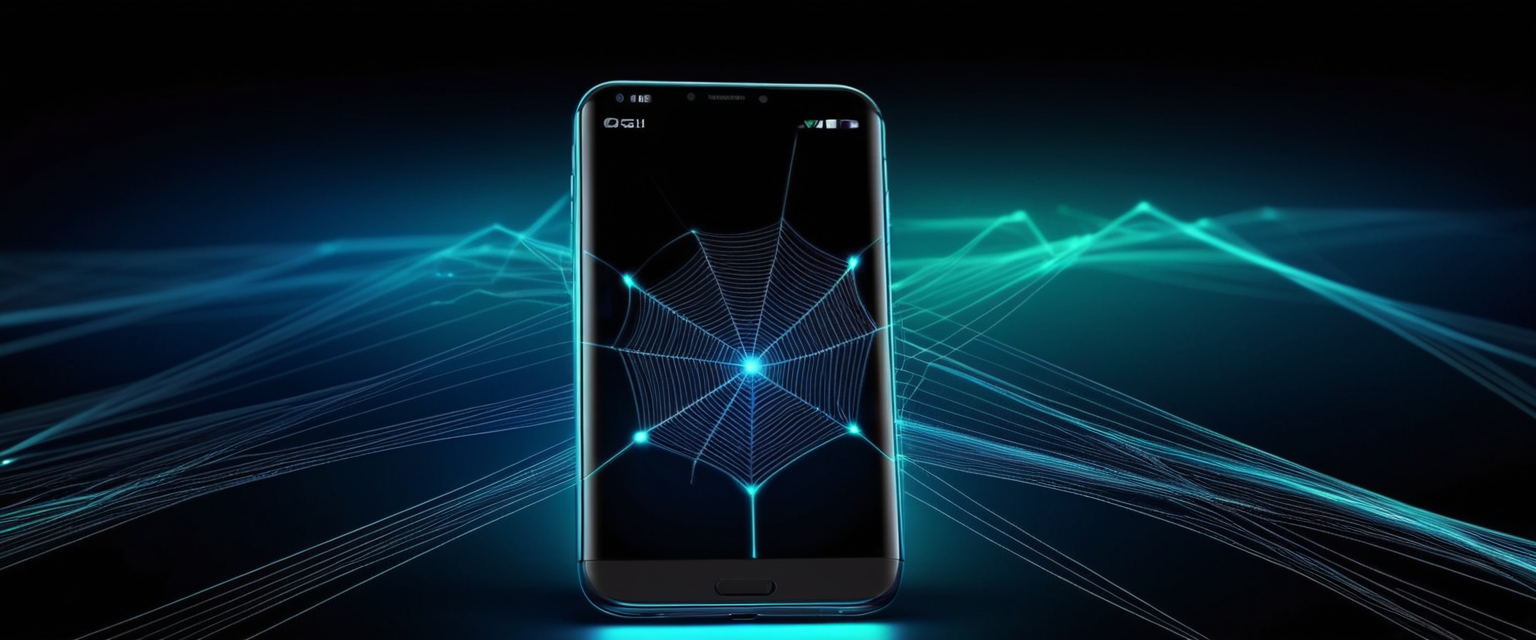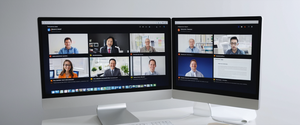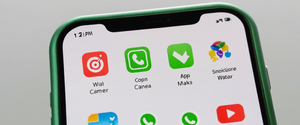
Apple’s approach to mobile privacy has fundamentally transformed the landscape of iOS security through multiple interconnected frameworks and technologies designed to prevent unauthorized app tracking and sensor access. This analysis examines the comprehensive ecosystem of privacy protections Apple has implemented, ranging from the pioneering App Tracking Transparency framework introduced in iOS 14.5 to more recent innovations like Privacy Manifests and advanced threat detection mechanisms. The core findings reveal that while iOS provides substantial protections against app-based surveillance through permission-based access controls, real-time indicators, and granular privacy reporting, users face ongoing challenges from sophisticated zero-click vulnerabilities, sensor-based fingerprinting techniques, and the persistent challenge of ensuring developer compliance with privacy standards. The research demonstrates that successful privacy protection requires active user engagement with monitoring tools combined with continuous evolution of Apple’s security posture to address emerging threat vectors.
The Evolution of iOS Privacy Architecture and User Permission Models
The foundation of modern iOS privacy protection rests upon Apple’s philosophical commitment to privacy as a fundamental human right, a position the company has maintained consistently throughout multiple product iterations and policy announcements. This commitment manifests in the architectural decisions that distinguish iOS from competing platforms, particularly the principle that no application can access sensitive data without explicit user permission. Before the introduction of formal privacy frameworks in iOS 14, users had limited visibility into exactly which applications were accessing their data and for what purposes. The evolution from basic permission prompts to comprehensive privacy reporting mechanisms represents a significant shift in how Apple empowers users to make informed decisions about their device usage.
The development of iOS privacy protections accelerated dramatically beginning with iOS 14, which introduced several foundational changes that would define the current privacy paradigm. The inclusion of visual indicators for microphone and camera access represented a watershed moment in mobile privacy awareness. These indicators—a green dot for camera access and an orange dot or square for microphone usage—provide always-visible feedback to users about active sensor access, whether the user is actively in an application or merely on the home screen. This design choice fundamentally altered the threat model for potential surveillance, as it became impossible for malicious applications to silently access these hardware devices without drawing user attention. The implementation of these indicators built upon years of academic research demonstrating that transparency mechanisms significantly affect user awareness and behavior patterns, though research has shown that many users remain underinformed about specific privacy implications even when these visual cues are present.
The permission model evolved further with iOS 14 and iPadOS 14, which extended requirements for local network access and Bluetooth connectivity, ensuring that applications requesting these capabilities must justify their requests to users. This expansion of the permission framework reflects Apple’s understanding that surveillance and tracking can occur through multiple vectors beyond the obvious camera and microphone hardware. Applications that require knowledge of nearby Bluetooth devices or local network capabilities represent potential privacy risks if that access is not properly constrained and monitored. The Accessory Setup Kit further refined this approach, allowing developers to enable intuitive pairing of Bluetooth accessories while protecting information about nearby devices.
App Tracking Transparency: Reshaping the Advertising Ecosystem
The introduction of App Tracking Transparency in iOS 14.5 represented Apple’s most consequential intervention in the mobile advertising ecosystem, establishing a regulatory-style framework that required applications to obtain explicit permission before accessing the Identifier for Advertisers (IDFA), the unique device identifier that had previously enabled deterministic, cross-app tracking by default. This shift fundamentally altered how mobile advertisers operate, marking the beginning of what Apple characterized as ensuring users have choice in how apps track and share their data with other companies for advertising or with data brokers. The specific definition of “tracking” under ATT refers to linking user-level or device-level data collected by one company’s app with user-level or device-level information from another company’s apps, websites, or offline properties for advertising targeting or measurement purposes.
The ATT framework established a specific workflow requiring applications to display a system-generated prompt asking users whether they wish to “Allow This App to Track Your Activity Across Other Companies’ Apps and Websites.” The default setting mirrors a “Ask App Not to Track” configuration, meaning that applications cannot access the IDFA by default without explicit user consent. Users who previously selected “Limit Ad Tracking” in iOS settings are automatically classified as opted-out within the ATT framework and will not receive these permission prompts unless they explicitly change their settings. The enforcement of ATT did not restrict applications’ ability to collect first-party data within their own systems; rather, it specifically targeted the third-party data linking and cross-app behavioral profiling that had characterized digital advertising for years.
The impact of ATT on the mobile advertising industry has been measurable and dramatic. Opt-in rates for tracking have remained persistently low across most verticals, beginning at approximately 19.4 percent globally in May 2021, rising to about 26 percent by July 2021, but then declining to approximately 14 percent by mid-2024. More recent 2025 data suggests modest recovery to around 35 percent globally when measured by users who were shown the prompt, though significant vertical variance persists. Gaming applications consistently achieve higher opt-in rates than applications, with sports games reaching 50 percent opt-in, hyper-casual games at 43 percent, and action games at 40 percent, while educational applications languished at only 14 percent in 2025. Geography also significantly impacts opt-in rates, with Brazil leading at 50 percent opt-in, followed by the United Arab Emirates at 49 percent and Turkey at 42 percent, while countries like Canada (29 percent) and Australia (27 percent) demonstrate lower engagement with tracking permissions.
The technical implementation of ATT created an entirely new measurement paradigm for the advertising industry. Rather than having access to deterministic, device-level tracking data for optimization purposes, advertisers must now rely upon aggregated measurement solutions like Apple’s SKAdNetwork and the emerging AdAttributionKit framework. These privacy-preserving measurement approaches provide aggregate insights rather than individual user-level data, fundamentally changing how campaign optimization operates. Some researchers and industry participants have criticized certain aspects of Apple’s ATT implementation, particularly the observation that Apple itself does not employ third-party data for advertising on its own applications—App Store, Apple News, and Stocks—instead holding itself to a higher privacy standard than competitors. Additionally, Apple actively prompts users to choose whether Apple can use first-party data for personalized ads, and even when Apple serves personalized advertising, it does not permit targeting based on user segments, a constraint that even major competitors like Meta and Google do not impose upon themselves.
App Privacy Report: Comprehensive Transparency Through Real-Time Monitoring
The App Privacy Report, introduced with iOS 15.2 and iPadOS 15.2, represents Apple’s attempt to solve the visibility problem that had plagued mobile privacy for years—users’ fundamental inability to understand what their applications are actually doing with their permissions. The tool operates as a passive monitoring system, gathering information about application behavior only after the user explicitly enables it through Settings > Privacy & Security > App Privacy Report. This deliberate design choice means that data collection begins only when users opt in, requiring users to be proactive participants in their own privacy monitoring rather than receiving automatic, default transparency. The report data is encrypted and stored exclusively on the user’s device, never transmitted to Apple or any third party, addressing concerns that a privacy monitoring tool might itself become a vector for additional surveillance.
The Data & Sensor Access component of App Privacy Report provides the most direct relevance to camera and microphone privacy concerns, displaying how many times and precisely when each application accessed privacy-sensitive data or device sensors within the past seven days. The report tracks access to location data, photos, camera hardware, microphone hardware, contacts, and various other sensitive categories. By providing both frequency counts and timestamps, the report enables users to identify patterns of suspicious behavior—for example, detecting whether an application that should not require camera access is nevertheless accessing the camera hardware, or whether an application is accessing sensors at unusual times when the user is not actively engaging with the application.
The Network Activity monitoring capabilities of App Privacy Report address a different but equally important privacy concern: understanding which external domains applications communicate with, indicating potential data sharing arrangements. The report separates App Network Activity, showing domains contacted directly by applications, from Website Network Activity, displaying domains contacted by websites visited within applications’ in-app browsers. Most Contacted Domains provides aggregated information about the web domains most frequently contacted by all applications combined, helping users identify patterns of cross-app tracking services. This network visibility is particularly valuable for identifying third-party advertising and analytics services that applications utilize, though notably, App Privacy Report deliberately excludes network activity from private browsing sessions in browser applications, a design choice balancing transparency with protection of sensitive browsing history.
Researchers have raised valid concerns about the usability and effectiveness of privacy reports, even well-designed ones like Apple’s offering. An interview study with 24 iPhone users found that iOS privacy nutrition labels, which serve a complementary role to App Privacy Report, played only a limited role in actually informing or empowering participants to manage their mobile app privacy effectively. The study identified areas of persistent misunderstanding about privacy labels, such as confusing terminology, unclear structures, and lack of perceived control over permission settings. Some research participants expressed frustration that privacy labels often appeared ambiguous about important issues or remained silent on practices users found concerning. The effectiveness gap between providing privacy information and enabling users to act upon that information represents a persistent challenge in privacy interface design, suggesting that transparency alone, while necessary, remains insufficient for robust privacy protection.

Microphone and Camera Access Control: Hardware Permissions and Real-Time Feedback Mechanisms
The fundamental architecture of iOS microphone and camera protection rests upon a simple but powerful principle: no application can access these hardware devices without explicit user permission, and that permission must be requested before the first access attempt. Applications are required to request permission and explain why they are asking, providing context that theoretically allows users to make informed decisions about whether that application genuinely requires access to the requested hardware. When users grant permission, they do so with clear visibility into what they are permitting, rather than through obscure privacy policies or default-enabled settings as on competing platforms.
The real-time feedback mechanisms for hardware access create what security researchers recognize as a powerful defense against silent surveillance. Beginning with iOS 14 and continuing through current versions, whenever an application uses the camera—whether the camera alone or the camera and microphone together—a green dot indicator appears in the device’s status bar, clearly signaling active camera access. Similarly, an orange dot or orange square appears whenever an application uses the microphone without the camera. These indicators appear regardless of whether the user is actively using the application or is instead on the home screen or using a different application, providing constant visibility into sensor access patterns. Additionally, a message appears at the top of Control Center informing users when an application has recently used the microphone or camera, providing temporal awareness even if the user missed the initial indicator appearance.
The implementation of real-time indicators represents a significant security improvement over previous iOS versions and the current state of competing mobile platforms. However, security research demonstrates that these indicators, while valuable, do not completely eliminate the threat of unauthorized sensor access. A 2020 vulnerability disclosed by security researcher Ryan Pickren demonstrated that Safari on both iOS and macOS contained a context confusion bug that could allow scripts from one domain to access camera permissions granted for a different domain. The vulnerability required a specific chain of bugs including URI parsing flaws that led to scripts executing in incorrect security contexts, demonstrating that even sophisticated operating systems can harbor subtle vulnerabilities affecting permission enforcement.
The restriction on background camera access provides an additional layer of protection. iOS and iPadOS explicitly disable application access to the camera when applications operate in the background, eliminating a large class of potential surveillance attacks where applications attempt to continuously record video feeds outside user awareness. This design choice reflects the principle that background access typically serves no legitimate user purpose for camera functionality—if an application needs to capture photos or video, those operations generally require active user engagement. Microphone access presents a more nuanced scenario, as certain applications legitimately require background microphone access for features like voice recording or audio analysis. However, even here, the permission model requires users to explicitly grant background microphone access, and applications cannot gain this permission surreptitiously.
Privacy Manifests and Developer Accountability: Mandatory Transparency Requirements
Beginning May 1, 2024, Apple fundamentally changed its approach to enforcing privacy standards by requiring all applications on the App Store to include Privacy Manifest files—structured documents detailing what data applications collect, why they access specific sensitive APIs, and which external domains they contact. This requirement extends beyond first-party application code to encompass all third-party software development kits (SDKs) and frameworks included in applications, ensuring comprehensive visibility into the full stack of code operating within applications. The Privacy Manifest requirement addresses a critical oversight in previous privacy enforcement: Apple previously relied upon application developers’ self-reported disclosures about data collection practices, but provided limited tools to verify the accuracy of those disclosures or to ensure that embedded third-party code complied with privacy standards.
The PrivacyInfo.xcprivacy file that constitutes the Privacy Manifest contains several critical elements required for App Store compliance. Applications must declare all “Required Reason APIs“—specifically those APIs with potential for device fingerprinting or unauthorized data access—along with approved reasons for their usage drawn from a controlled list maintained by Apple. Applications must document all data types collected through NSPrivacyCollectedDataTypes arrays, specifying whether each data type is linked to user identity, whether it participates in tracking activity as defined by ATT, and the specific purposes for data collection drawn from Apple’s enumerated purposes list. Finally, applications must declare all external domains contacted by the application or its embedded SDKs, providing visibility into potential third-party data sharing arrangements.
The implementation of Privacy Manifest requirements faced initial challenges, with developers reporting confusion about requirements, ambiguity regarding certain API categories, and difficulty obtaining compliant privacy manifests from third-party SDK providers. Apple established a phased approach to enforcement, initially requiring manifests only for new applications or updated applications containing newly added third-party SDKs from the list of commonly used SDKs. Future enforcement was planned to expand to require manifest declarations for all APIs used throughout entire application binaries, representing a more comprehensive approach to privacy enforcement. Non-compliance with Privacy Manifest requirements results in application rejection during App Store review, creating strong incentives for developers to comply even during the early implementation phases.
The Privacy Manifest system operates in conjunction with automatically generated Privacy Nutrition Labels displayed on App Store product pages, creating a unified transparency ecosystem. When developers submit applications to the App Store, Xcode aggregates privacy manifest declarations from the application and all embedded SDKs into a single comprehensive Privacy Report. This report forms the basis for the Privacy Nutrition Label displayed to consumers, theoretically ensuring that labels accurately reflect actual data collection practices rather than relying upon developer assertions that may diverge from reality. The Privacy Manifest requirement represents Apple’s attempt to shift privacy enforcement from primarily reactive investigation of privacy violations to proactive requirement that developers declare their practices upfront, with the declaration built into verifiable machine-readable formats rather than natural language privacy policies.
Emerging Security Threats: Zero-Click Vulnerabilities and Mercenary Spyware
While iOS provides substantial defenses against application-level privacy violations, emerging research reveals sophisticated attack vectors that can circumvent these protections entirely. Advanced spyware campaigns leveraging zero-click vulnerabilities—exploits requiring no user interaction whatsoever—demonstrate that determined adversaries with significant resources can achieve unauthorized access to camera, microphone, and other sensitive device capabilities regardless of Apple’s permission framework. The Graphite mercenary spyware campaign discovered in 2025 leveraged a zero-click vulnerability in iOS (CVE-2025-43200) that allowed maliciously crafted photos or videos shared via iCloud Links to trigger remote code execution on devices running iOS 18.2.1. The attack required only that journalists receive and open iCloud share links containing malicious photo or video content, with the exploitation occurring entirely within the photo rendering pipeline with zero visible indication to users.
Forensic analysis of Graphite-infected devices confirmed that the spyware achieved comprehensive surveillance capabilities, granting attackers full access to messages, location data, microphone feeds, and camera feeds after successful exploitation. The sophisticated targeting of prominent European journalists, including verified cases of Ciro Pellegrino (head of Fanpage.it’s Naples newsroom) and an anonymous journalist, revealed the real-world consequences of zero-click vulnerabilities: they enable surveillance of high-profile targets with minimal technical barriers to attack success. Apple resolved the vulnerability in iOS 18.3.1 released February 10, 2025, but importantly delayed public disclosure until June 11, 2025, a practice researchers at Citizen Lab characterized as problematic given that the vulnerability remained actively exploited in the wild during the disclosure delay.
The AirBorne vulnerability family discovered in 2025 demonstrates another emerging threat vector: flaws in Apple’s implementation of the AirPlay protocol affecting iPhones, iPads, MacBooks, Apple TVs, and Vision Pro devices, as well as third-party devices licensed to use Apple’s AirPlay SDK. These 23 critical vulnerabilities could enable zero-click remote code execution via Wi-Fi networks, adversary-in-the-middle attacks, and denial of service attacks for threat actors on the same wireless network. The security implications are particularly concerning given that AirPlay SDK adoption extends the vulnerability surface across a vast ecosystem of third-party manufacturers producing smart televisions, speakers, and connected car systems. While Apple released patches on March 31, 2025, many third-party vendors have not yet followed suit, leaving countless devices potentially exposed in home, office, and public spaces where multiple devices share the same network.
The potential for Pegasus spyware—developed by NSO Group and known for exploiting zero-click vulnerabilities—to leverage the AirBorne flaws represents the type of convergence threat that security researchers find particularly alarming. Pegasus has historically targeted flaws in messaging apps, telephony services, and image rendering pipelines, demonstrating sophisticated understanding of how to exploit low-interaction attack vectors. The AirBorne vulnerabilities, offering remote code execution via Wi-Fi without requiring any user interaction, represent precisely the type of opportunity sophisticated spyware operators seek to exploit. The fragmented update landscape across the third-party AirPlay ecosystem creates a long tail of vulnerable devices that may serve as persistent surveillance platforms for years despite Apple’s own patches being available.

Sensor-Based Fingerprinting and Ultrasonic Tracking: Privacy Threats Beyond Applications
Beyond application-level access to cameras and microphones, emerging privacy threats leverage device sensors in ways that transcend traditional permission models. Motion sensor-based fingerprinting exploits the fact that accelerometers and gyroscopes present on virtually all smartphones contain manufacturing tolerances and calibration discrepancies that create unique, persistent device signatures. Research demonstrates that two smartphones of the same make and model (such as iPhone 13 Mini units) placed side by side on a flat surface produce distinguishable accelerometer readings, variations that form the foundation for device fingerprinting attacks.
A motion sensor-based mobile device fingerprinting (MSMDF) attack involves embedding malicious code in web platforms or mobile applications that silently collects motion sensor data whenever users access those platforms or applications. From this data, unique device fingerprints can be extracted and used to train classifiers capable of recognizing the same device across websites and applications, even after users clear cookies, enable private browsing modes, or take other traditional privacy precautions. Over time, MSMDF attacks enable reconstruction of detailed timelines showing when users visit specific websites and applications, behavioral patterns across services and locations, and ultimately long-term surveillance capabilities. Additionally, by correlating motion fingerprints across platforms during login events or other behavioral cues, attackers can link multiple devices belonging to the same user, enabling cross-device tracking and deep behavioral profiling that circumvents device-level anonymization techniques.
The critical privacy concern emerging from MSMDF research is that motion sensors typically do not require explicit user permission on most platforms to access, making them an invisible vector for device fingerprinting attacks. Web browsers and mobile applications can access accelerometer and gyroscope data without any permission prompt that would alert users to this data collection. Current countermeasures against MSMDF attacks involve injecting controlled distortions into raw motion sensor data streams before they reach applications or web scripts, degrading fingerprint stability through techniques like uniform noise addition or Laplace noise addition inspired by differential privacy frameworks. However, implementing these countermeasures at the platform level requires explicit attention from operating system developers and has not yet become standard practice across iOS or competing platforms.
Ultrasonic tracking represents another sensor-based privacy threat operating outside traditional permission models. This technology utilizes inaudible ultrasonic sounds (frequencies above the range of human hearing, typically in the 19-20 kHz range) embedded in audio content, retail environments, or web pages, which mobile devices’ microphones can detect and process. While applications legitimately accessing the microphone for audio recording can detect these ultrasonic beacons, researchers have demonstrated that applications continuously listening for ultrasonic beacons in the background—without active user engagement—can accomplish various privacy-invasive tracking objectives including cross-device tracking, location tracking inside retail environments, television viewing habit monitoring, and website visitor de-anonymization.
A 2017 study by researchers at the Technische Universität Braunschweig identified 234 Android applications constantly listening for ultrasonic beacons in the background without explicit user awareness, and detected ultrasonic beacons in various web media content and in signals transmitted in four of 35 stores in two European cities. While this research focused on Android rather than iOS, the fundamental vulnerability—that microphone access can be leveraged for ultrasonic tracking beyond the application’s apparent purpose—applies across platforms including iOS. The security implications are particularly concerning because ultrasonic tracking can operate within the constraints of iOS’s permission model: if an application has requested and been granted microphone access for an ostensible purpose (such as voice calls or audio recording), it can subsequently utilize that access to implement ultrasonic tracking without requiring any additional permissions or user interaction.
Advanced Privacy Protection Technologies: Differential Privacy and Private Cloud Compute
Apple has invested significantly in advanced cryptographic and privacy-enhancing technologies that enable data collection for product improvement and user experience enhancement while providing mathematical guarantees that individual user behavior cannot be reverse-engineered from aggregate statistics. Differential privacy represents the cornerstone of Apple’s approach to this challenge, enabling the company to extract valuable aggregate insights from user data while providing provable privacy guarantees grounded in information-theoretic foundations rather than merely organizational promises.
Apple’s differential privacy implementation employs local differential privacy on user devices as the first step in a privacy-preserving data pipeline. When features utilizing differential privacy operate, data is privatized on the user’s device using controlled noise injection before transmission to Apple’s servers. The purpose of this local privatization step is to ensure that Apple’s servers cannot reconstruct the original user data from received transmissions; instead, servers receive only noised versions that provide privacy guarantees. Device identifiers are removed from the data, and information is transmitted to Apple over encrypted channels. The Apple analysis system ingests differentially private contributions while dropping IP addresses and other metadata that might enable re-identification. During aggregation, privatized records are processed to compute relevant statistics, and aggregate statistics are then shared with relevant Apple teams. Critically, both the ingestion and aggregation stages occur in restricted-access environments, ensuring that even the privatized data is not broadly accessible to Apple employees.
Apple’s differential privacy implementation incorporates per-donation privacy budgets, quantified by epsilon parameters that impose strict limits on the number of contributions from individual users to preserve privacy. The epsilon parameter represents the privacy loss permitted in each contribution; smaller epsilon values provide stronger privacy guarantees but require larger noise injection, potentially degrading utility. For different features, Apple balances these tradeoffs differently depending on use cases. For Lookup Hints, Apple uses epsilon of 4 and limits contributions to two per day. For emoji frequency analysis, Apple uses epsilon of 4 and submits one donation per day. For QuickType suggestions, Apple uses epsilon of 8 and submits two donations per day. For Health data type usage, Apple uses epsilon of 2 and limits contributions to one per day.
The application of differential privacy extends to location-aware features including iconic scene detection in Photos, where Apple learns about kinds of photos people take at frequently visited locations without personally identifiable location data leaving users’ devices. This approach enables Apple to identify significant places like Central Park or the Golden Gate Bridge and understand what types of photographs people capture at these locations, allowing better key photo selection for Memories while maintaining strict privacy guarantees. The Photos application learns about significant people, places, and events based on each user’s library, then presents curated Memories, with the key photo selection influenced by the popularity of iconic scenes learned from iOS users through differentially private aggregation.
Apple Intelligence, the company’s new on-device AI system, represents perhaps the most sophisticated application of privacy-preserving computing architecture. For requests that can be processed entirely on-device using the device’s neural engine, processing occurs locally without any cloud involvement, ensuring sensitive information never leaves the device. For more complex requests requiring server-side computational resources, Apple Intelligence utilizes Private Cloud Compute, which extends the privacy and security architecture of iPhone into server environments running Apple silicon. When requests are routed to Private Cloud Compute, only the data relevant to the specific user request is processed on Apple silicon servers; data is never stored or made accessible to Apple staff, and is used only to fulfill the immediate user request before being permanently deleted.
Private Cloud Compute architecture incorporates multiple security mechanisms including Secure Enclave protection of critical encryption keys, Secure Boot ensuring that only signed and verified OS code runs on servers, Trusted Execution Monitor confirming only authorized code executes, and attestation enabling users’ devices to cryptographically verify the identity and configuration of Private Cloud Compute clusters before sending requests. Importantly, independent privacy and security researchers can inspect the software code running on Private Cloud Compute servers to verify Apple’s privacy promises, representing a more transparent approach to cloud privacy than most technology companies provide.
User Recommendations and Privacy Management Best Practices
Effective iOS privacy protection requires active user participation in understanding and configuring available security mechanisms. Users should regularly review their App Privacy Report when running iOS 15.2 or later, accessing it through Settings > Privacy & Security > App Privacy Report. The report should be examined for applications accessing location, camera, microphone, or contacts without apparent justification for those permissions, and users should consider whether the frequency and timing of access patterns align with their expectations of how applications should behave. For applications exhibiting suspicious access patterns, users can revoke permissions through Settings > Privacy & Security, where lists of applications requesting access to each hardware feature can be reviewed and access toggled on or off for any application.
Users concerned about app-based surveillance should examine the Privacy Nutrition Labels displayed on App Store product pages before installing applications, though research suggests these labels remain underutilized despite substantial effort invested in their design. The labels provide standardized summaries of data collection practices including information about location, browsing history, and contacts, offering a brief snapshot of how developers characterize their privacy practices. However, labels rely upon developer honesty, and independent research has documented instances of misleading or inaccurate privacy label disclosures, suggesting that labels should be considered one data point rather than definitive privacy guidance.
Users seeking enhanced protection against sophisticated spyware and zero-click vulnerabilities should consider enabling Lockdown Mode, an extreme protection feature available through Settings > Privacy & Security > Lockdown Mode. Lockdown Mode is explicitly designed for individuals who believe they might be targeted by highly sophisticated cyberattacks by private companies developing state-sponsored mercenary spyware, and is therefore not recommended for general use by most users. The feature imposes substantial functionality restrictions including disabling SharePlay, shared albums, FaceTime Live Photos, FaceTime Continuity Handoff, and requiring wired accessories to be unlocked through the device when connecting. However, for journalists, activists, and other high-risk individuals, these functionality tradeoffs may be justified by the substantially enhanced resistance to advanced exploit chains that Lockdown Mode provides.
Maintaining current iOS versions represents one of the most effective privacy and security practices, as Apple’s security patches frequently address vulnerabilities that could enable unauthorized sensor access or advanced surveillance capabilities. Given the zero-click vulnerabilities discovered in AirPlay and other Apple systems, users should enable automatic iOS updates or promptly install security patches when announced. Users should also review Background App Refresh settings, as research has demonstrated that background app refresh can enable applications to regularly send data to tracking companies without active user awareness, with some applications observed sending data during late night and early morning hours when users are unlikely to notice network activity.
Applications requesting microphone or camera access without clear justification should be scrutinized or uninstalled. While social applications like Instagram legitimately require camera access for image capture and sharing, weather applications should not require camera access, and many other categories of applications lack obvious need for sensor access. Users can review which applications have requested camera or microphone permissions through Settings > Privacy & Security > Camera or Microphone, seeing lists showing all applications that have requested access to these hardware resources. Applications not actively used can be deleted, or permissions can be individually revoked for applications where access seems excessive or unnecessary.
Users should disable App Tracking Transparency requests for applications where tracking seems inappropriate or where the perceived value does not justify the privacy tradeoff of allowing cross-app behavioral profiling. While ATT prompts default to enabled in most configurations, users can prevent applications from requesting App Tracking Transparency permission entirely by going to Settings > Privacy & Security and toggling “Allow Apps to Request to Track” to off, though this setting is enabled by default. For users in European jurisdictions or others concerned about competitive practices, the evolving regulatory landscape around ATT should be monitored, as some regulatory authorities have suggested that ATT’s implementation may create competitive advantages for Apple by making tracking unnecessarily difficult for competitors while Apple maintains its own advertising services with different rules.
iOS Data: Charting Your Course for Control
Apple’s privacy protection architecture represents one of the most comprehensive and sophisticated systems deployed across commercial mobile operating systems, incorporating multiple overlapping mechanisms including permission-based hardware access control, real-time visual indicators of sensor usage, comprehensive privacy reporting capabilities, developer accountability requirements through Privacy Manifests, privacy-enhancing technologies like differential privacy and Private Cloud Compute, and advanced threat detection mechanisms. The system effectively prevents most classes of application-level surveillance, particularly through the combination of permission requirements, real-time indicators, and the restricted sandbox architecture that prevents applications from affecting other applications or accessing system resources beyond what users have explicitly granted. App Tracking Transparency has demonstrably changed the mobile advertising ecosystem, forcing adoption of privacy-preserving measurement techniques and reducing the ability of applications to perform deterministic cross-app behavioral profiling with user consent rates remaining low across most application categories.
However, significant gaps and emerging threats persist despite these protections. Zero-click vulnerabilities like those exploited by Graphite and the AirBorne vulnerability family demonstrate that sophisticated adversaries can circumvent iOS’s permission framework and achieve comprehensive sensor access through exploitation of parser bugs, protocol vulnerabilities, and other subtle implementation flaws rather than through application-level access. Sensor-based fingerprinting through motion data and ultrasonic tracking represent emerging threat vectors that operate outside traditional permission models, leveraging sensors typically accessible without explicit user consent to track users across devices and identify them uniquely despite privacy-preserving measures. The Privacy Manifest system, while representing significant progress in developer accountability, still relies upon developer honesty regarding data collection purposes, and enforcement remains incomplete with future expansion to cover entire application binaries still pending.
The privacy protection landscape will likely continue evolving in several directions. First, Apple will continue discovering and patching zero-click vulnerabilities, and the delay in disclosing CVE-2025-43200 despite active exploitation suggests that Apple may need to reconsider responsible disclosure practices for actively exploited vulnerabilities affecting journalists and other high-risk populations. Second, sensor-level privacy protections may receive increased attention as motion sensor fingerprinting becomes more widely understood as a persistent threat. Third, the Privacy Manifest system will eventually require comprehensive API usage documentation for entire application binaries, creating more complete transparency into developer practices. Fourth, differential privacy and Private Cloud Compute technologies may see broader application as Apple and other technology companies attempt to extract value from user data while providing credible privacy guarantees grounded in mathematical principles rather than merely organizational policy.
The ultimate effectiveness of iOS privacy protection depends upon Apple’s continued commitment to implementing and improving these mechanisms, the technology industry’s willingness to prioritize security over convenience in protocol design, and individual users’ engagement with available tools to monitor and control application behavior. While iOS provides substantially better privacy protections than competing platforms for most users against most threat models, the protection is not absolute, and highly targeted surveillance by well-resourced adversaries remains possible through zero-click exploits and other sophisticated attack vectors. For most users, the combination of permission-based access control, real-time indicators, and regular security updates provides meaningful protection against app-based privacy violations. For high-risk individuals, additional protections including Lockdown Mode, current iOS versions, and careful application selection may be appropriate. The future of mobile privacy protection likely depends upon continued technological innovation in privacy-enhancing mechanisms combined with regulatory oversight ensuring that both Apple and competing platforms maintain serious commitments to protecting user privacy against increasingly sophisticated threats.
Protect Your Digital Life with Activate Security
Get 14 powerful security tools in one comprehensive suite. VPN, antivirus, password manager, dark web monitoring, and more.
Get Protected Now





